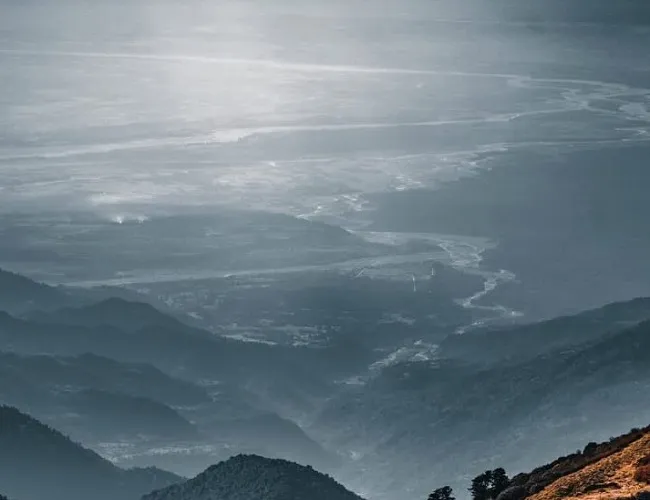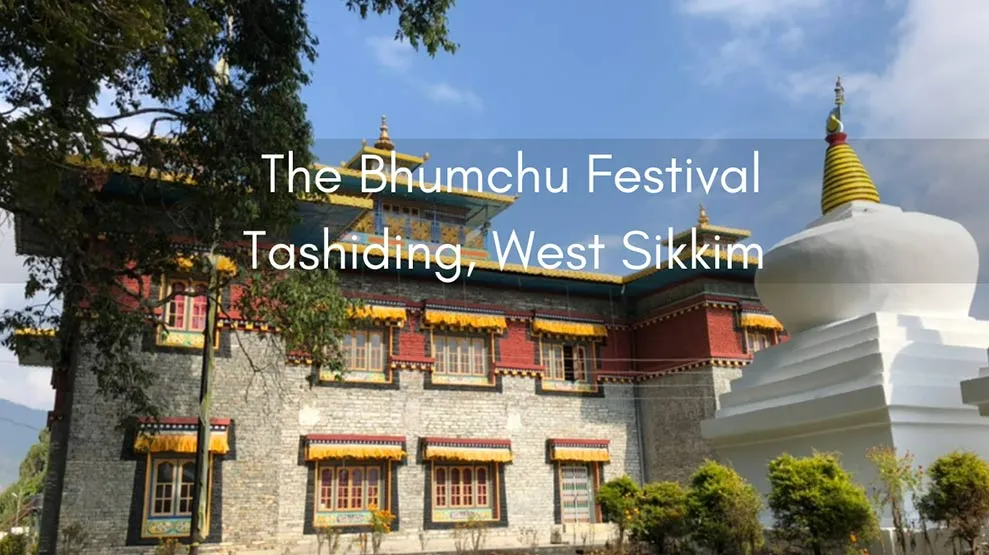
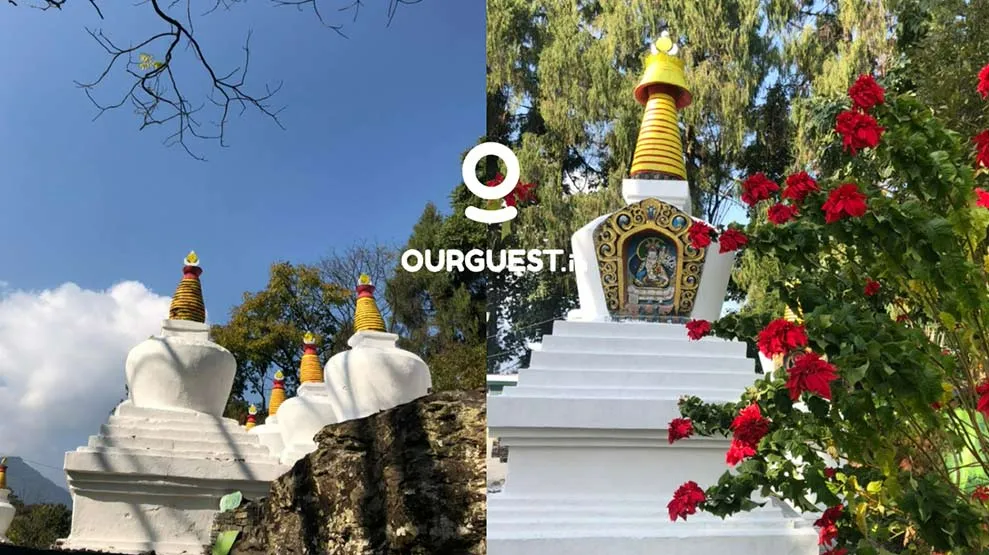
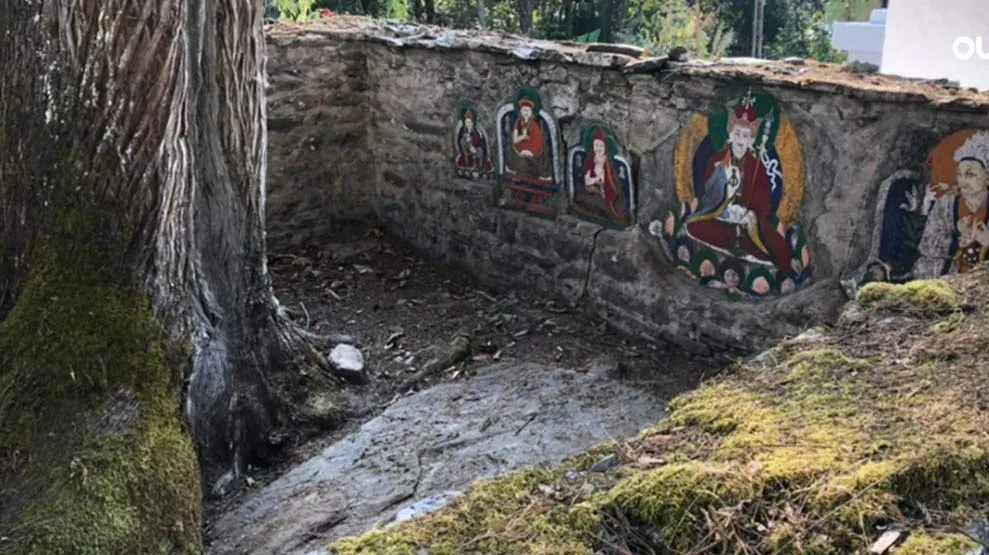
The Magic Vase & Bumchu Festival
The vibrant Bhumchu Festival, celebrated annually in West Sikkim, is more than just a spectacle; it's a deeply spiritual event that holds the key to the state's predicted future for the coming year. Steeped in tradition & cultural significance, this two-day festival unfolds at the sacred Tashiding Monastery in West Sikkim, drawing devotees & curious travelers alike. Devotees from all over Sikkim as well as neighboring countries like Bhutan, Nepal, etc. come to take part in this festival.

The heart of the Bhumchu Festival lies in the opening of a sacred pot, known as the "Bhumchu," which translates to “bum” meaning vessel and “chu” meaning water. It is celebrated on the 15th day of the first month of the Tibetan lunar calendar (usually falling between February and March). This pot, filled with water from a nearby sacred river, is believed to hold the key to Sikkim's future. As monks chant and perform rituals, the anticipation builds. The pot is ceremoniously opened, revealing the water level within. Water level to the brim signifies good fortune, prosperity, and bountiful harvests, overflowing levels indicate floods while a low level indicates drought & potential challenges and dusty water indicates a year full of conflict and clash.

Irrespective of the predictions, the Bhumchu Festival remains a joyous occasion. Devotees gather to receive blessings from the monks and partake the holy water (believed to bring good health and fortune). The air vibrates with chants, prayers, and the clanging of cymbals, creating a mesmerizing atmosphere.
Beyond Predictions:
The Bhumchu Festival is more than just a fortune-telling ceremony. It's a time for communities to come together, celebrate their shared heritage, and reaffirm their faith. The festival serves as a reminder of the interconnectedness between nature, spirituality, and human well-being. It's a testament to the state's rich cultural heritage, deep spiritual beliefs, and harmonious connection with nature.
While the exact origin of the Bhumchu Festival remains shrouded in some mystery, estimations place its beginnings somewhere between 755 and 804 CE in Tibet. Legend attributes the festival's genesis to Guru Padmasambhava, a revered Buddhist master. He is believed to have consecrated the land with water from his sacred vase, later concealed in the Tashiding Monastery as a hidden treasure. The festival reportedly experienced a revival in the 17th century when a reincarnation of Guru Padmasambhava rediscovered the sacred vase.
Today, the Bhumchu Festival attracts not only locals but also tourists seeking unique cultural experiences. The combination of tradition, spectacle, and spiritual significance creates a captivating event. The festival acts as a bridge between past and present, keeping ancient traditions alive and fostering a sense of cultural identity among the younger generation.
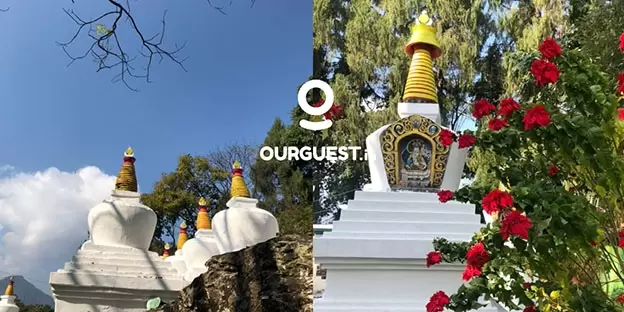
If you're planning a trip to Sikkim during the Bhumchu Festival, be prepared to witness a truly unique and captivating event. Dress modestly, respect local customs, and soak in the vibrant atmosphere. You might even be fortunate enough to receive a blessing and participate in the traditional cultural dances and music performances that often accompany the festival. The Bhumchu Festival offers a window into the heart and soul of Sikkim & is a vibrant tapestry of culture, tradition, and belief waiting to be unraveled.
About Tashiding Monastery
Tashiding Monastery is believed to be the holiest monastery in Sikkim. The legend is that just the glimpse of Thongwa Rangdol Shrine (chorten), washes away your sins. Seeing is cleansing here; no need to take a holy dip into a holy river. The walk up to the monastery is dotted with prayer flags. The carvings on the walls which lead to the complex are the Buddhist Chant- “Om Mane Padme Hum”.

Tashiding which means “The Devoted Central Glory” was founded in 1641 by Ngadak Sempa Chempo Phunshok Rigzing who belonged to the Nyingma sect of Tibetan Buddhism. Though the other belief is, when Guru Padmasambhava was looking out for a quiet place, he shot an arrow into the sky which landed on the site of the Tashiding Gompa.
Tashiding Monastery – Location
This monastery is situated at a height of 5000 feet & is built on top of a hill above the confluence of the Rathong Chu and Rangeet rivers, with the Mt. Kanchendzonga providing the scenic back drop. It is about 16 km from Yuksam, 40 km from Gezing via Legship. It is about 4 hours (100 kms) from Gangtok and about 1.5 hours from Ravangla (40 kms).

Where to Stay:
Tashiding has very few accommodations for travellers. Sanu homestay and Rabney Hotel are some good places in Tashiding where you can stay. One can also choose to stay at Ravangla (Barfung Retreat) which is close to the famous Buddha Park of Sikkim.
OurGuest arranges and manages tours in Sikkim and also takes care of permit documents. For customized holiday planning, contact us at 9734813101 or 7669503993, or email us at contact@ourguest.in.


